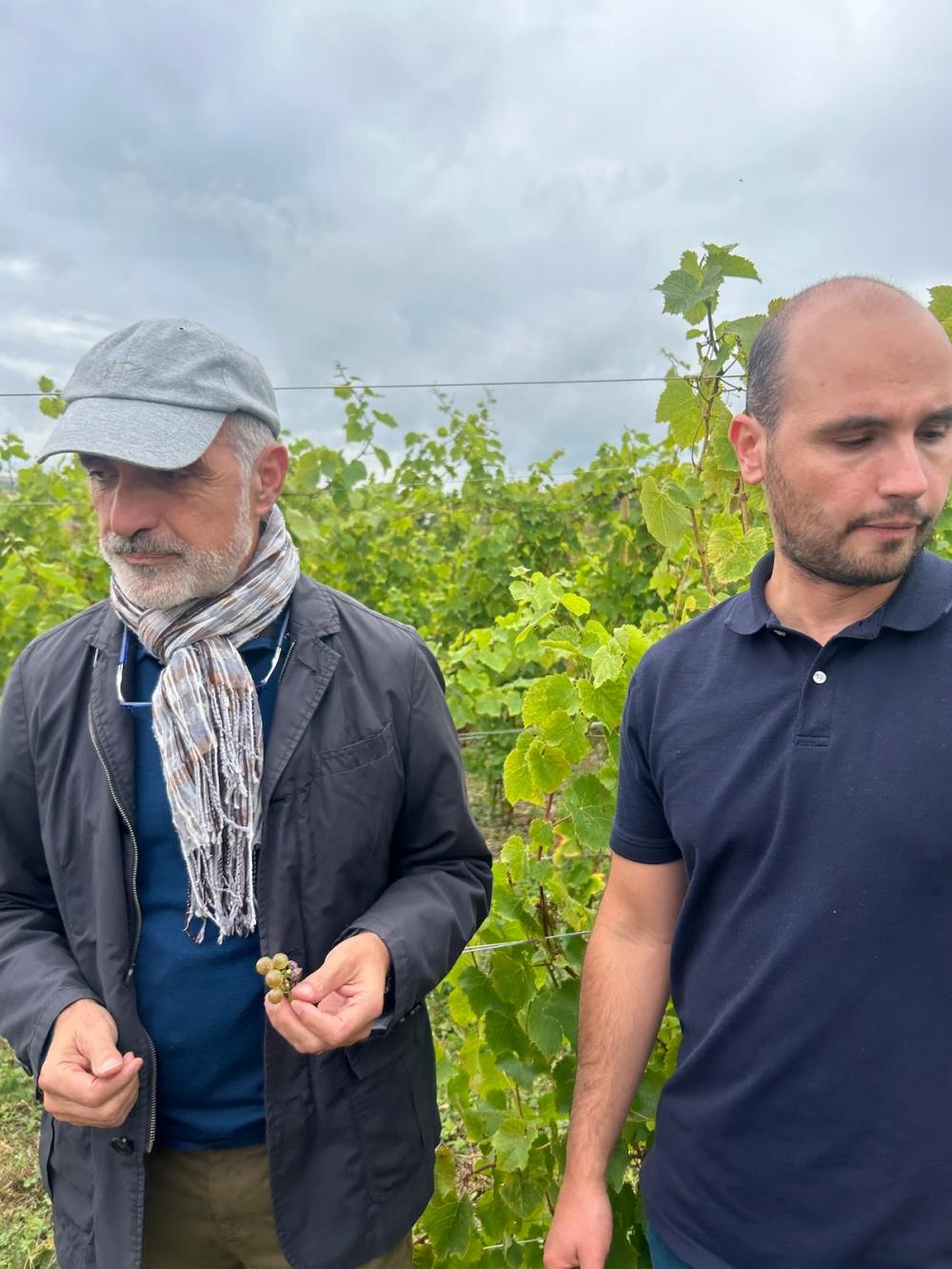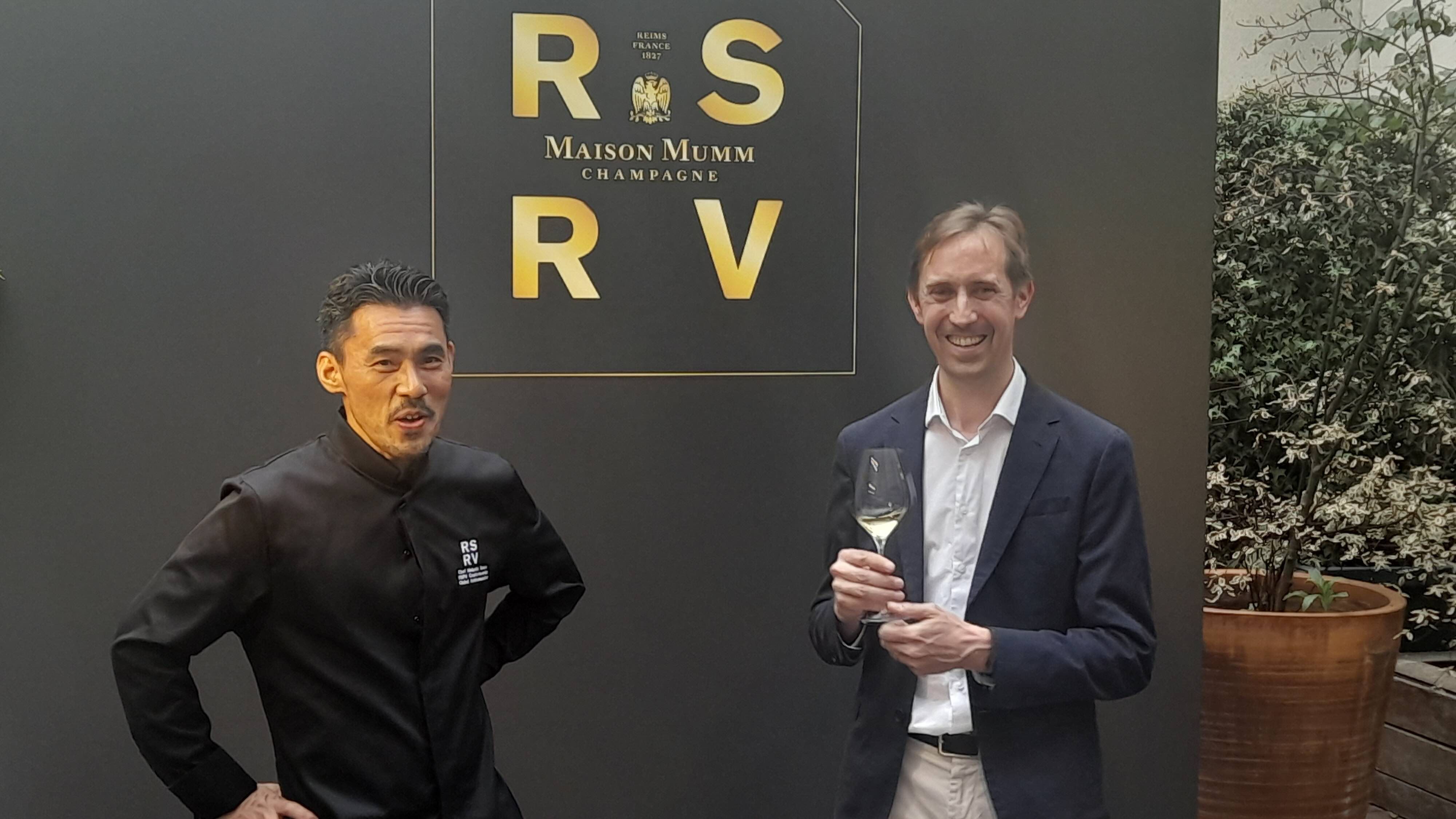It’s not always been easy for Champagne Houses in recent years. The surge in demand for the world-famous wine has waxed and waned; the post-Covid bubble for many has burst. There are, however, always exceptions. Whilst many Houses wait for the inevitable upturn in the market there are others that seem to float gracefully above the froth. One of those families is Champagne Drappier.
A family champagne producer spanning eight generations since 1808: perhaps there is some serendipity to be found in the magic number eight and the family Drappier.

What happens across the pond with our American cousins usually has some fallout here. So, when America’s love for champagne declined this year by more than 12 percent; the success story of Champagne Drappier, whose decline was significantly less (just under 5 percent) this decrease, in relative terms, was seen as a good news story.
Of course, it would be difficult to gauge why Drappier has fared better than many, but one possible explanation rings true: the importance of family.
Visiting the relative far outpost of the champagne region Urville (closer to Chablis in Burgundy) to meet and spend time with family Drappier, alongside fellow champagne lovers and writers was a touching affair. Especially when three generations gathered for an intimate family style lunch at the Maison.
Champagne Drappier’s success can be summarised, perhaps, in three ways.
Drappier listens. They listen to their elderly grandfather who at 98 drinks the house’s own champagne every day (a secret for longevity perhaps?). He can pass judgment on the wines made by his son (Michel) and grandson (Hugo) – continuity and experience speaks for itself.
Secondly, they listen to the history of the varieties planted, the work being done with Petit Meslier, Arbanne, Fromenteau and Blanc Vrai is relatively unique.
Thirdly, they listen to their environment – their global ecological approach was recognised in 2016 with the certification of the estate as Carbon Neutral. Climate change and the impact that it has had negatively in many wine regions has been felt here at Drappier.
Climate aware

The importance of family: Hugo and Michel Drappier (l-r)
Seventh generation owner Michel Drappier and his son Hugo hosted a sumptuous dinner in the room where French President Charles de Gaulle also once entertained world leaders. Conversation turned quickly to the weather (we were mainly English at this dinner after all!)
“For the past 12 months, we measure everything – we had 1,450mm rain. A little bit less than twice than what is expected (average here is 750mm). So that's my 50th vintage and it's the smallest. But fortunately, we have some patches outside Urville. But in Les Avisés, I think it's the first time we have zero.” Said our eloquent host Michel.
With this in mind it seems to make sense that Drappier continues to explore the significance of its heritage varieties in its champagnes. These grapes include Petit Mesler, Arbanne, Blanc Vrais and Fromentau
Drappier may be better known for its iconic yellow label Carte d’Or, but with the vinification of these ancient varieties, there seems to be more to looking back but also looking forward. I asked Michel why he believed the use of these varieties into the Drappier stable was so important?
“The idea was to plant for conservation in case they might disappear… it was to make something (specifically) from Champagne, to be curious about the varieties that came from our soil. There is also probably something in the genes (Arbanne) to help fight global warming.”
A tasting of four ancient grape varieties

Quattor Blanc de Quatre Blancs
25% Arbanne, 25% Petit Mesler, 25% Blanc Vrai, 25% Chardonnay. Disgorged February 2024.
A rare champagne made from all four white varieties. The medium straw colour glistens like an autumnal sunrise. The nose like the same season is packed with truffles and dried herbs. The palate mimics the nose but with freshly buttered toasted brioche that lingers on the finish, creating a moreish effect on the tongue.
Quattor-Blanc de Quatre Blanc: Extra Brut: First edition
25% Arbanne, 25% Petit Mesler, 25% Blanc Vrai, 25% Chardonnay. Base 2004. Disgorged 2014.
Deep gold with an intense and pronounced nose. A strong (but not unpleasant) medicinal aroma. Perfumed notes of forest honey, Mirabelle plums and candied citrus peel. The palate is as complex as the nose promises, lemon posset and a sprightly acidity on the finish that gives a youthful twist to this more mature expression.
Père Pinot 2
25% Pinot Noir, 25% Petit Meunier, 25% Fromentau, 25% Blanc Vrai: Base 2021. Disgorged March 2024.
A glorious, enchanting, pale peach-coloured wine. The glass exudes a dizzying array of complex aromas. These include saffron, dried damask rose petals, peach skin and lemon zest (not pith). Made in 100% oak this wine evolved on the palate to echo the aromas on the nose with a citric flourish on the finish.
Trop M’en Faut!
100% Fromentau, Brut Nature (zero dosage). Base blend of 2019 and 2020.
A shy nose which given time reveals coconut and Sicilian lemon both dried and fresh. The palate is lean, clean and sharp. Enlivens the senses with many differing citric expressions, from lemon, lime to grapefruit. An unique and delicious wine that will pair well with classic ‘champagne foods’, cheese gougères, smoked trout and oysters.
Looking to the future

Planting heritage varieties for conservation
With the grape variety Voltis now allowed under appellation rules and growing in Drappier’s own vineyards the curiosity of old and new varieties seems to have come full circle. The PIWI variety is the first to be sanctioned for growth and use in Champagne and is a variety that is both resistant to downy and powdery mildew. With increasing rain and climatic issues being found in the region perhaps the Drappiers are once again listening to nature and to science; securing a sparkling future for many generations of the family to come.







































